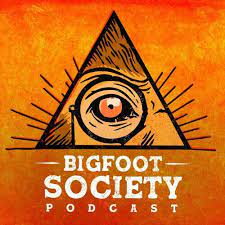
[ad_1]
Unraveling the Mysteries: Exploring the Fascinating World of Cryptobiology
Cryptobiology, also known as cryptozoology, is a branch of science that explores and investigates creatures of legend and folklore. It delves into the mysteries surrounding elusive and mythical beings that are often dismissed as mere figments of imagination or superstition. From the legendary Bigfoot to the terrifying Chupacabra, cryptobiology attempts to unravel the truth behind these enigmatic creatures.
The term cryptozoology was first coined in the 1950s by the Belgian-French zoologist Bernard Heuvelmans, who dedicated his life to studying unknown animals. He believed that there were still unidentified creatures lurking in unexplored regions of the world and set out to prove their existence through scientific inquiry.
One of the most well-known and controversial cryptid creatures is the Loch Ness Monster, also known as Nessie, which allegedly resides in the depths of Scotland’s Loch Ness. Sightings of the creature date back to the 6th century, but it wasn’t until the 1930s that it gained widespread attention due to a famous photograph known as the “Surgeon’s Photograph.”
Despite numerous expeditions and investigations over the years, no conclusive evidence has been found to prove the existence of the Loch Ness Monster. However, cryptozoologists argue that the lack of evidence does not necessarily mean the creature doesn’t exist. They believe that it could be a surviving prehistoric reptile or a large eel that has yet to be scientifically documented.

Another iconic cryptid is Bigfoot, also known as Sasquatch, a hairy ape-like creature said to inhabit forests, primarily in North America. Reports of Bigfoot sightings and footprints have been documented for centuries by indigenous cultures, and the legend of Bigfoot has permeated popular culture. Despite the absence of concrete evidence, numerous expeditions and investigations continue to search for this elusive creature.
Cryptozoologists propose various theories regarding the existence of Bigfoot, ranging from an undiscovered primate species to an interdimensional being. Skeptics argue that the sightings can be attributed to misidentifications, hoaxes, or simple folklore, but believers remain steadfast in their pursuit of tangible evidence.
Apart from these well-known cryptids, cryptobiology also encompasses a plethora of lesser-known creatures from around the world. Some examples include the Chupacabra, a blood-sucking creature said to roam Latin American countries; the Yeti, a hairy bipedal creature of the Himalayan region; and the Mothman, a winged humanoid figure associated with paranormal events in West Virginia.
What drives cryptozoologists in their quest for these elusive creatures? For many, it is the sense of wonder and fascination that comes with the unknown. The possibility of discovering a new species, unearthing evidence of a mythical creature, or rewriting the books on what we thought we knew about the natural world is invigorating and drives scientific inquiry.
Critics argue that cryptozoology lacks scientific rigor, often relying on anecdotal evidence, hearsay, and unreliable eyewitness accounts. However, proponents of the field counter that it is precisely this unconventional approach that allows for the exploration of uncharted territories and the potential discovery of new species.
In recent years, advancements in technology have provided cryptozoologists with new tools for investigation. Thermal cameras, drones, and DNA analysis techniques have been utilized in attempts to gather concrete evidence of cryptids. These advancements offer hope for a more rigorous and scientific approach to the field of cryptobiology.
Whether you consider cryptobiology a legitimate scientific pursuit or an eccentric fringe, there is no denying its captivating allure. The mysteries surrounding cryptids arouse our curiosity, ignite our imagination, and invite us to explore the realms of the unknown. While the existence of these creatures remains a hotly debated topic, the quest to uncover their secrets continues to captivate the minds of both believers and skeptics alike.
COTPS Crypto Review: Exploring the Pros and Cons of this Emerging Digital Currency
In conclusion, cryptobiology is a field that explores the mysteries of creatures often dismissed as mythical or legendary. While skeptics question the legitimacy of investigating such creatures, believers remain hopeful that new evidence will surface to shed light on the existence of these cryptids. With advancements in technology and the unwavering curiosity of cryptozoologists, the fascinating world of cryptobiology continues to be explored, unveiling new possibilities and unraveling the enigmatic secrets of the natural world.
[ad_2]







